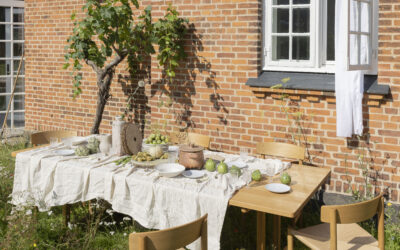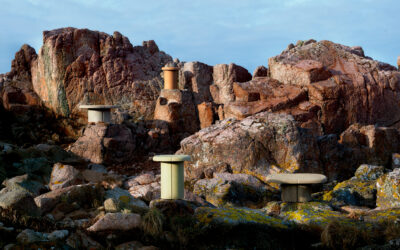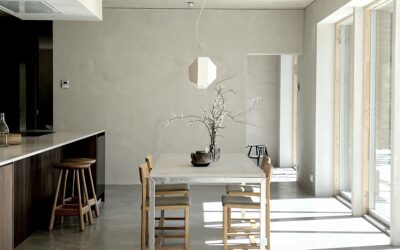Cabin Culture & The Alpine Lifestyle
Designing optimal personal spaces is not only reserved for our everyday homes; in some markets, recreational homes and cabins also have significant time and attention devoted to them. This is the case in the mountainous nations of Norway, Austria, and Switzerland, where the population values creating comfortable homes away from home in touch with nature.
The strong establishment of cabin interiors and the popularity of mountainous cabin destinations indicate that the market is developing, with niche magazines and influencers sharing content revolving around these spaces functioning as a source of inspiration for cabin owners. We have spoken to two experts within the field: Tonja Folkvard, Editor-in-Chief of Hytteliv, and Ellen Schwick, cabin interior influencer, shedding light on the strong market position of “cabin interior” and why brands can benefit from collaborating with profiles and publications that showcase these recreational homes.
Looking up north: Norway’s cabin dedication
For many Norwegians, going to one’s cabin is a highly valued way to unwind and connect with nature. Seizing the outdoors – whether it be skiing in the winter, or hiking in the summer – holds long traditions, and is inherently part of the culture. In fact, the element of history has a strong impact on Norwegian cabin culture. Cabins can remain in families for years and years: properties are passed down between generations and function as a shared recreational space for the extended family.
As a result, Norwegians have a strong relationship with their cabins, often stronger than that of their everyday homes. Many are hesitant towards renting their cabins out, and rather want to spend as much time as possible there themselves, including weekends and holidays like Easter, the latter being high seasons for cabin goers.
The most prominent cabin destinations in Norway are characterized by their closeness to outdoor sports facilities: among the most sought-after areas, you can find Trysil, Hemsedal, and Geilo. The common denominator between these destinations is their appeal and catering to a wide array of ages and interests, thus functioning as year-round nature and sports recreational zones for the whole family.
With this in mind, it comes as no surprise that Norwegians are investing both time and effort into their cabins. Traditionally, Norwegian cabins are rustic and laid-back in style: comfort and functionality are key elements. However, in more recent years, the willingness to invest in these leisure spaces has increased: this applies to both the cabin’s interior as well as outdoor spaces like terraces.
- Norway boasts 500,000 cabins, a vast amount compared to its modest population
- 2,5 million Norwegians have access to a cabin property, equaling almost half of the entire country’s population
- High ownership rate: 97,5% of all registered cabins are owned by Norwegians, indicating prominence and accessibility
The flourishing Alpine area and its impressive appeal
Surrounded by alpine peaks and wildflowers, once abandoned farming huts have been converted into chic and contemporary holiday cabins. The alpine region, including Switzerland and Austria, is, with 60-80 million tourists per year, one of the most visited regions on the European continent.
In fact, the tourism industry in the alps generates close to 50 billion in annual turnover and provides 10-12 % of all the jobs in this area. To draw the scope of the overall size of this business, the alpine region has, with its more than 600 ski resorts and 10,000 ski installations, an extremely dynamic infrastructure.
Austrians as well as The Swiss, are very proud of their cabin culture. Their strong connection to the outdoors and skiing lifestyle is apparent and has resulted in an increase in people coming there for the whole experience. Their heritage is deeply integrated into their day-to-day lives as these two nations are situated directly within the alps and they have created their societal understanding around themselves interacting with their surroundings. This means the demand for typical alpine interior, both cozy cabin and chalet styles, remains high.
The most sought-after areas here are the regions of “Verbier”, “St. Moritz”, “Gstaad”, “Davos” and “Grindelwald”. Hence, one can say that the business thrives; this development generates great engagement amongst entrepreneurs and influencers that take pride in their surroundings by making it their topic of conversation.
- Low homeownership rates are caused by tight property legislation: 50% of the population owns private properties
- Due to skyrocketing property prices in the Alps, cabins and chalets are mostly owned by luxury real-estate companies and hotels
Interview with Tonja Folkvard – Editor-in-Chief of Hytteliv
Tonja Folkvard is the Editor-in-Chief of Hytteliv, Norway’s leading magazine about cabin interiors. With her extensive experience and expertise within the field, she has highlighted what trends and needs currently characterize the market of the Norwegian cabin interior, as well as how this is reflected in the magazine. (Picture credit: Caroline Roka)
Interview with Ellen Schwick – Influencer and Cabin owner in Salzburg, Austria.
The “Hütte am Wald” cabin run by Ellen Schwick lies in the beautiful area of Salzburg, Austria. The owner, Ellen, has given us an exclusive insight into how she works as a content creator and nano-influencer. She also tells us about what interior pieces are especially worth mentioning and what she thinks sets alpine influencers apart from other interior content creators.
Sara is the Norwegian Market Coordinator at VOCAST, responsible for Norwegian fashion and lifestyle research. When not at VOCAST, she studies Brand and Communications at Copenhagen Business School. Besides work and studies, she is a travel, music, and movie enthusiast.
Kevin is the DACH Market Coordinator at VOCAST. He grew up in Berlin, studying fashion journalism and communication, and has previously worked within fashion PR. Currently, he is studying toward a bachelor’s degree in Marketing and has a strong interest in sustainability, writing, and modern design practices.
SIGN UP TO OUR NEWSLETTER
Get free knowledge on how to optimize your B2B marketing & new product releases.
RELATED POSTS
The Art of Slow Living: When Thoughtful Choices Redefine Design
With a fast-paced everyday life, the principles of slow living stand in a sharp and perhaps comforting contrast. As the movement progresses, more people are integrating the values of slow living into all areas of their lives – from slow food to slow fashion and slow...
Mastering Sustainable Branding in Interior Design
In recent years, the appeal of trendy marble coffee tables, plush sofas, and finely designed lamps has captivated us all. While the interior design industry often embodies craftsmanship, it also has a less glamorous side: its environmental impact. This reality has...
Beyond the Aesthetic: The Emergence of Stylists as Influencers
In the realm of interior design, stylists, recognized for turning creative visions into captivating editorial and commercial projects, are increasingly emerging as key influencers on social media. The rise of digital platforms has substantially redefined their roles,...







